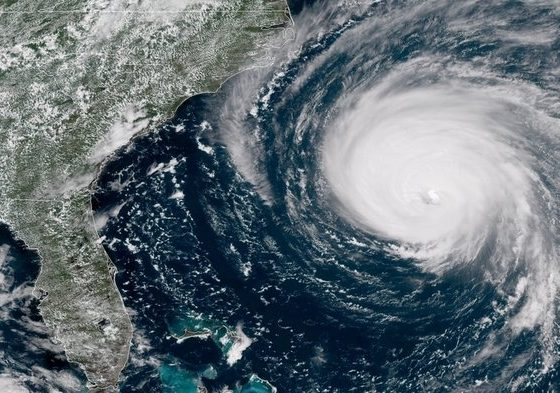Hurricane Florence first hit the East Coast of the U.S. on Sept. 9 in Maryland. More damage occured a week later when the storm reached North Carolina. As the storm continued to move down the coast to South Carolina, many individuals were evacuated from their homes. The damage in South Carolina alone is estimated to reach $1.2 billion, and Florence claims the title for the worst storm in the state’s history. Rainfall as a result of the storm reached over 50 inches in some areas and eight trillion gallons total in North Carolina alone. Most destruction so far has been a result of flooding from this rain and has not only resulted in power outages across states in the region but also the loss of lives. As of right now, 42 deaths have been recorded, most of which were individuals found in vehicles.
The storm has also lead to many other health concerns as flood water begins to mix with animal waste and carry it throughout many parts of the cities. Most of this pollution is coming from pig farms, but also a coal ash spill. These contaminants threaten drinking water and will cause damage long after waters have receded. Another lasting effect comes in cities such as Conway, S.C. where rivers continue to rise as the flood waters diminish and drain into them, resulting in continued flooding and danger to come at any time.
Still present flood waters and road closures, as well as lost vehicles and outed power, has kept over 8,000 individuals in shelters throughout the Carolinas and Virginia. Those working in agriculture also have their lives on hold as 3.4 million poultry birds and almost 6 thousand pigs were lost to the flooding. Many crops such as cotton, peanut and hemp were also damaged and will be detrimental to many of those whose livelihood is in agriculture.
Going forward, over 40,000 workers are in the affected areas to help restore power and attempt to aid in repairing flood damage. South Carolina’s Governor McMaster has applied for over $1 billion in federal aid for the recovery process. Of this money, $165 million is under the National Flood Insurance Program and $125 million is going to be put towards agriculture. Officials will attempt to repair damage as soon as possible. When water recedes, roads will be thoroughly inspected and opened if safe. Repairing all roads and bridges after the 2016 hurricane in North Carolina took over a year,, so it is estimated that Florence will require even longer with the continuing flood damage.











